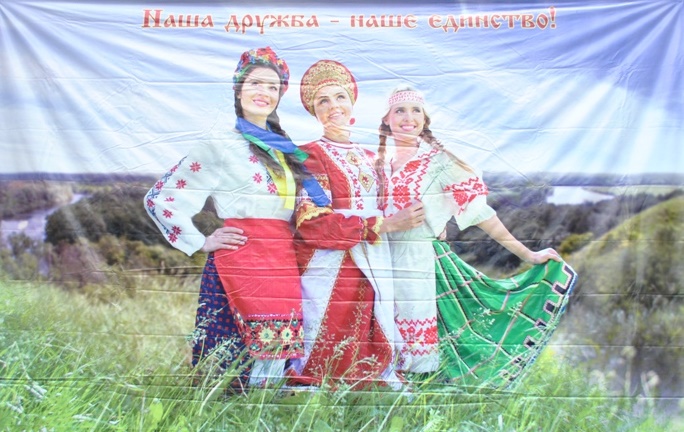Where did Zakharchenko’s aides pick up the name for their new utopia, the “state of Malorossiya” as a “successor” of Ukraine? And how does the historical meaning of “Malorossiya” correlate with Donetsk separatists’ dreams of establishing their regime over the rest of Ukraine?
Where did the name “Malorossiya” come from?
The term originates from the Greek ecclesiastic term Mikrá Rhōsía (“Little Rus”), which appeared in the 14th century in order to differ the newborn and smaller Orthodox archdiocese of Halych from the older and bigger archdiocese of Kyiv (called Megálē Rhōsía, or “Great Rus”).
“Great Rus” thus meant the canonic territory that had formerly been under the political power of the great princes of Kyiv, except for its Western part, where the Kingdom of Galicia-Volhynia was proclaimed in the mid-13th century. Since 1299, however, the metropolitan archbishop of Kyiv actually officiated in the city of Vladimir in Northeast Rus. Given that in the 13th century, Kyiv was badly destroyed during the Mongol invasion and the following fighting in the Golden Horde, Vladimir became a safer place for the archbishop’s residence. Soon the rulers of the small Duchy of Moscow enticed the church authority to move to their capital.
For a long time, this Moscow-centered church area formally retained the title of the Metropolitan Archdiocese of Kyiv.

Mikrá Rhōsía or Mala(ya) Rus continued to define Orthodox lands which, after the fall of the Kingdom of Galicia-Volhynia and demise of the Golden Horde, were part of the Grand Duchy of Lithuania and Poland. These lands included the terrains of contemporary West and Central Ukraine with Lviv and Kyiv, as well as of Belarus (or “White Rus”) and sometimes also Lithuania proper with her capital, Vilnius. The term became especially popular with local Orthodox writers who saw Muscovy (“Great Rus”) as their prospective ally against the expansion of Catholicism.
In the mid-17th century, Ukrainian Cossack rebels led by Hetman Bohdan Khmelnytsky shook off the Polish rule and appealed to the tsar for the military protection of Ukraine. In this context, the name of Mala(ya) Rus or Mala(ya) Rossiya became a useful tool for both Cossack leaders and Moscow statesmen to justify their supposedly common, primarily anti-Polish and anti-Catholic, interest.
It seems that the spreading of the term “Malorossiya” was a by-product of the submission of the Ukrainian Cossack Hetmanate to Muscovy in the second half of the 17th and early 18th century. It gradually substituted for Malaya Rus/Malaya Rossiya, apparently because of the proliferation of the latter’s derivative, the adjective Malorossiiskiy, in Moscow bureaucratic vocabulary—with Malorossiisky Prikaz (still called also the Prikaz of Malaya Rossiya, and not “of Malorossiya”) as a chief governmental institution in charge of Ukrainian Cossack affairs.

How much Ukrainian land did Malorossiya cover under the Russian Empire?
After the death of Bohdan Khmelnytsky, Moscow tsars granted their suzerainty over the self-governed eastern part of the Hetmanate (on the left bank of the Dnieper River) nearly for 100 years. In 1764, Russian Empress Catherine II abolished the autonomy of the left-bank Hetmanate and created the Malorossian Governorate in its place. The territory of this first Governorate (1764–1781) covered most of today’s Chernihiv and Poltava Oblasts, as well as Kyiv and the eastern part of Kyiv Oblast.
When Russia annexed the right bank of the Dnieper from partitioned Poland at the end of the 18th century, the borders of the province of Malorossiya were not extended westwards. On the contrary, Kyiv and its vicinity remained beyond the second Malorossian Governorate (1796–1802). In the first half of the 19th century, a new entity called the Malorossian General Governorate expanded to the east absorbing the terrains of the former Slobidska Ukraine, which are now Kharkiv, Sumy, and the northern half of Luhansk Oblasts.
In the 19th-century documents of the Russian government, the imperial province of Malorossiya was clearly set apart from governorates to the south, as well as of the right Dnieper bank. In either of its three administrative configurations, it embraced substantial parts of only seven regions in the north, northeast, and center of contemporary Ukraine (and never all of them at the same time). The rest of Ukraine’s twenty regions, including Donetsk Oblast, did not belong to it.

Why did the image of Malorossiya as something nearly tantamount to Ukraine develop nonetheless?
In the 19th century, the meaning of malorossy or “Little Russians” changed from the population of Left-bank Ukraine (“Malorossiya” as just mentioned) to the ethnic group. Russian imperial bureaucrats and intellectuals, including those originating from Ukraine, started to consider the people living on the both Dnieper sides south of Polissia forests as a linguistic and cultural community which evidently differed from the residents of central Russia. This community inhabited a territory much bigger than the administrative province of Malorossiya but was referred to as malorossy as a whole.
By the time, the medieval connotations of canonic “Little” and “Great” Rus were long forgotten. Instead, in the 19th century the ethnonym “Little Russians” obtained two important implications: their alleged belonging (along with “Great Russians” and Belarusians) to the triune “Russian people”—a key element of the imperial ideology—and their inferior status within this hierarchical ethnopolitical construction.
Read also:
- Donetsk separatists call to replace Ukraine with Russian imperial province Malorossiya
- How Moscow hijacked the history of Kyivan Rus
- Anna of Kyiv, the French Queen from Kyivan Rus
- From Kyivan Rus to EuroMaidan
- Princess Olha of Kyiv: a golden page in Ukrainian history
- Ukrainian conflict is between ‘heirs of Kyivan Rus’ and ‘heirs of Golden Horde’
- Crimean history. What you always wanted to know, but were afraid to ask
- Putin’s ‘appropriation’ of medieval Ukrainian princess reflects more than historical arrogance
- Symbolic expansion: how Putin annexes history, not only territories
- Ukraine and Russia “share a long and common history” FAQ






